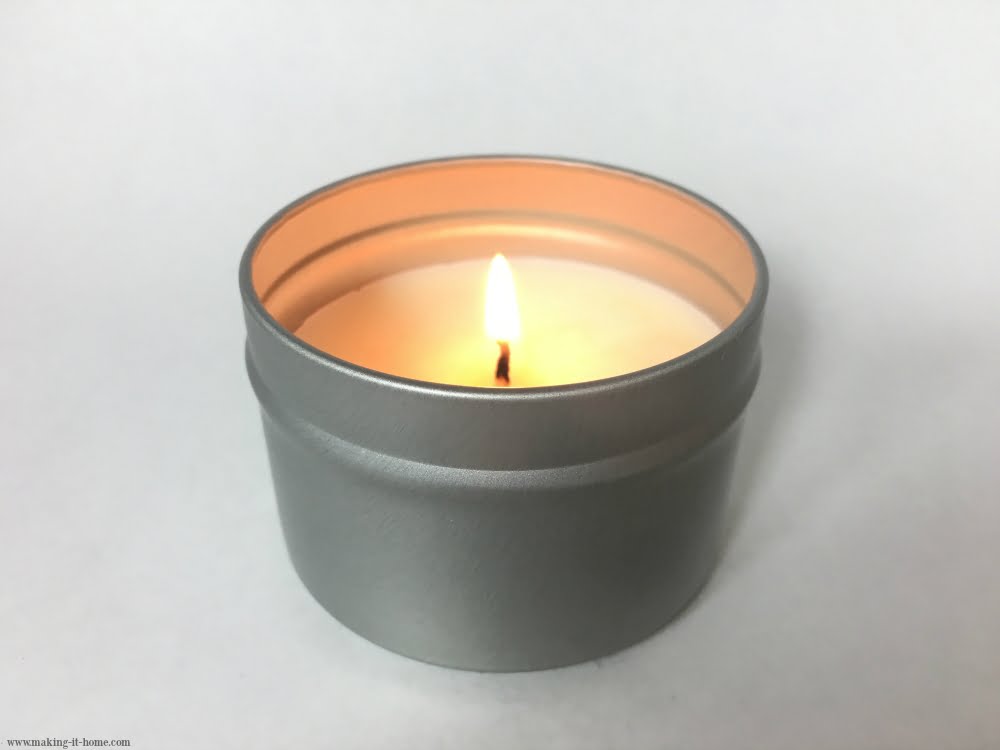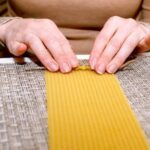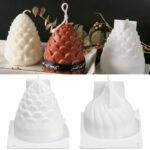How do I clean my candle making equipment? This is a question that frequently arises for both novice and experienced candle makers alike. The cleanliness of your candle making equipment plays a crucial role in the quality of your candles and the overall success of your craft. Proper cleaning ensures that your equipment is free from any residue or contaminants that could affect the appearance, scent, and burn time of your candles.
Cleaning candle making equipment is not just about aesthetics; it also ensures the safety of the process. Wax residues left on molds, pouring pots, or thermometers can lead to fire hazards if not properly cleaned. Additionally, residue buildup can negatively impact the performance of your equipment over time, affecting its longevity and functionality.
In this article, we will delve into the importance of cleaning candle making equipment and how it contributes to producing high-quality candles. We will explore safety precautions to be aware of and provide a step-by-step guide for first-time cleaning. Furthermore, detailed instructions for each piece of equipment will be provided, including tips and solutions for dealing with stubborn residue and stains.
Join us on this journey as we share pro tips from experienced candle makers to ensure efficient and effective cleaning practices. By understanding the significance of keeping your candle making equipment clean, you can maintain both safety and longevity in your crafting endeavors.
Safety Precautions
When it comes to cleaning candle making equipment, safety should always be the top priority. Understanding the risks involved and taking appropriate protective measures is essential to ensure a safe and successful cleaning process.
Risks Involved
Cleaning candle making equipment can expose you to potential hazards if proper precautions are not taken. Some of the risks involved include:
- Hot wax: The equipment may still contain hot or melted wax residue, which can cause burns if not handled with care.
- Chemical exposure: Cleaning solutions and solvents used for removing wax and residue may contain chemicals that can be harmful if inhaled or come into contact with your skin.
- Sharp tools: Scraping off hardened wax or debris from molds or other equipment can pose a risk of cuts or punctures if sharp tools are not handled properly.
Protective Measures
To minimize these risks, it is important to take necessary protective measures during the cleaning process. Here are some measures you should consider:
- Personal protective equipment (PPE): Wear heat-resistant gloves to protect your hands from hot surfaces and hot wax. Additionally, wearing goggles and an apron can provide further protection against chemical splashes.
- Ventilation: Work in a well-ventilated area to avoid inhaling fumes from cleaning solutions. Open windows or use fans to improve air circulation.
- Cooling time: Allow your candle making equipment to cool down completely before starting the cleaning process. This will minimize the risk of burns from hot surfaces.
- Proper disposal: Dispose of used cleaning solutions, solvents, and other hazardous materials according to local regulations. Do not pour them down the drain or throw them in regular trash bins.
By understanding the risks involved and taking appropriate protective measures, you can ensure a safe and worry-free cleaning process for your candle making equipment. The next section will focus on gathering all the necessary cleaning supplies to achieve spotless equipment.
Cleaning Supplies
When it comes to cleaning your candle making equipment, having the right supplies is essential for achieving a spotless finish. Gathering all the necessary items beforehand will ensure that you have everything you need to effectively clean your equipment. Here are some key cleaning supplies to gather:
- Cleaning Agent: Choose a cleaning agent specifically formulated for candle making equipment, such as a wax cleaner or solvent. This will help break down any wax residue and make it easier to remove.
- Microfiber Cloths: These soft cloths are perfect for wiping away any excess wax or dirt from your equipment without scratching or damaging the surfaces.
- Brushes: Have a variety of brushes on hand for different types of cleaning tasks. Small, soft-bristled brushes can be used to scrub hard-to-reach areas, while larger brushes can be used for general cleaning.
- Hot Water: Heat up some water to help dissolve stubborn wax residue and make it easier to clean off your equipment.
- Rubber Gloves: Protect your hands from any harsh chemicals and hot water by wearing rubber gloves during the cleaning process.
- Safety Glasses: Safety glasses are important when working with any cleaning agents or hot water to protect your eyes from potential splashes or accidents.
- Soap and Water: Although primarily used for washing hands after handling chemicals, soap and water can also be used as an additional cleaning method for certain candle making equipment.
By gathering these essential cleaning supplies beforehand, you’ll be well-prepared to achieve a spotless finish on your candle making equipment. Investing in quality products and taking proper care of your equipment will not only extend its lifespan but also ensure that you’re always working with clean and safe tools when creating your beautiful candles.
Step-by-Step Guide
Cleaning your candle making equipment is an essential step to ensure the quality and longevity of your candles. Whether you are a beginner or an experienced candle maker, it is important to thoroughly clean your equipment before each use to avoid any contamination or residue that may affect the final product. This section will provide you with a step-by-step guide on how to clean your candle making equipment for the first time.
- Gather Your Supplies: Before starting the cleaning process, make sure you have all the necessary supplies. This includes dish soap, hot water, scrub brush or sponge, paper towels or cloths, and rubber gloves for safety.
- Disassemble Equipment: Take apart any removable components of your candle making equipment such as pouring pots, molds, and thermometers. This will make it easier to clean each piece individually.
- Pre-Wash: Before diving into the deep cleaning process, give your equipment a pre-wash with hot soapy water to remove any excess wax or debris. Use a scrub brush or sponge to gently scrub away any residues.
- Deep Cleaning: Fill a sink or basin with hot soapy water and submerge each piece of equipment for at least 10-15 minutes. For stubborn residue, you can add a small amount of vinegar to the soapy water solution.
- Scrubbing and Rinsing: After soaking, scrub each piece of equipment using a brush or sponge to remove any remaining wax or stains. Rinse thoroughly with warm water to ensure all traces of soap and residue are removed.
- Drying: Allow each piece of equipment to air dry completely before reassembling and storing them away for future use. Make sure there is no moisture left as it can cause mold growth.
By following this step-by-step guide, you can ensure that your candle making equipment is clean and ready for use whenever you want to create beautiful handmade candles.
| Equipment | Cleaning Method |
|---|---|
| Molds | Soak in hot soapy water, scrub, and rinse. |
| Pouring Pots | Disassemble and soak in hot soapy water, scrub, and rinse. |
| Thermometers | Clean with a cloth or sponge soaked in rubbing alcohol. |
| Measuring Spoons/Cups | Wash with hot soapy water and rinse. |
Detailed Instructions for Each Piece of Equipment
Cleaning Molds:
Prepping the Mold
Before cleaning your candle molds, make sure to remove any leftover wax or debris from previous pours. Use a butter knife or scraper to gently scrape off any excess wax, being careful not to damage the mold. Then, rinse the mold with warm water and dish soap to remove any remaining residue.
Soaking the Mold
For deep cleaning, prepare a mixture of hot water and dish soap in a sink or container large enough to fully submerge the mold. Let the mold soak for at least 30 minutes to loosen any stubborn wax or dirt buildup. If there are any crevices that are hard to reach, use a soft-bristle brush or toothbrush to gently scrub away any residue.
Removing Stains and Residue
If your molds have stains or residue that soaking didn’t completely remove, consider using a solution of equal parts vinegar and water as an additional cleaning step. Apply the solution onto a cloth or sponge and gently scrub away the stains. Rinse thoroughly with warm water afterwards.
Cleaning Thermometers:
Safety First
Thermometers can be fragile, so take extra care when cleaning them to prevent breakage or damage. Wear gloves and handle the thermometer with caution.
Wiping Off Excess Wax
Start by wiping off any visible wax on the thermometer using a cloth dampened with rubbing alcohol or hot soapy water. Make sure to remove all debris from around the sensor area as even small particles can affect accuracy.
Sterilizing the Thermometer
To ensure your thermometer is properly sanitized, you can immerse it in boiling water for a few minutes or wipe it down with disinfectant wipes specifically designed for thermometers. Be sure to follow the manufacturer’s instructions for any cleaning or sterilization processes.
Cleaning Pouring Pots:
Melting Leftover Wax
Begin by melting any leftover wax in the pouring pot by placing it on a heat source, such as a stove or candle warmer. Be careful not to overheat the wax or cause it to smoke, as this can be dangerous.
Wiping Out Residue
Once the wax has melted, carefully pour it into a container for future use or discard it properly if it cannot be reused. Use a paper towel or cloth to wipe out any remaining residue from the pouring pot while it is still warm. If there are stubborn spots, you can also use a non-abrasive sponge and soapy water.
Removing Stubborn Stains
If there are stains that did not come off with wiping, you can create a paste using baking soda and water. Apply the paste onto the stained areas and let it sit for a few minutes before scrubbing gently with a soft sponge or brush. Rinse thoroughly with warm water to remove all traces of the paste.
By following these detailed instructions for each piece of equipment, cleaning your candle making tools will become easier and more efficient. Remember to always prioritize safety precautions when handling equipment and seek advice from experienced candle makers for specific recommendations on cleaning certain materials. With proper maintenance, your candle making equipment will last longer and contribute to producing high-quality candles consistently.
Troubleshooting
Stubborn residue and stains can sometimes be a challenge when cleaning candle making equipment. However, with the right tips and solutions, you can effectively tackle these issues and ensure that your equipment remains clean and ready for future use.
One common issue when it comes to residue and stains is wax buildup on molds. Over time, wax can accumulate on the surface of your molds, making it difficult to remove. To address this problem, start by placing the mold in the freezer for a few minutes. The cold temperature will cause the wax to contract and become easier to remove.
Once the wax has hardened, use a blunt object, such as a plastic scraper or spatula, to gently scrape off the residue. Avoid using sharp objects that may damage the mold’s surface. If there are still stubborn residues left, you can try rubbing alcohol or vinegar solution applied with a cloth or soft-bristle brush to dissolve any remaining wax.
Another common issue is stained pouring pots caused by dyes or fragrance oils used in candle making. To remove these stains, begin by heating water in your pouring pot until it is hot but not boiling. Then add a tablespoon of dish soap and stir until it dissolves completely.
Allow the mixture to sit in the pot for about 15 minutes to loosen any stains. Afterward, scrub the interior of the pouring pot with a non-abrasive sponge or cloth. For tougher stains, you can also make a paste using baking soda and water and apply it to the stained areas before scrubbing.
Thermometers are another piece of equipment that can be prone to residue buildup if not cleaned properly. To remove any leftover wax from your thermometer, start by soaking it in warm soapy water for several minutes. Gently scrub away any residue with a soft-bristle brush or cloth dipped in warm soapy water. Be sure to rinse thoroughly afterward.
By following these troubleshooting tips and solutions for stubborn residue and stains on your candle making equipment, you can keep your equipment in optimal condition and ensure the quality of your candles. Regular maintenance and cleaning will not only extend the longevity of your equipment but also contribute to safer and more efficient candle-making processes.
Deep Cleaning Techniques
Maintaining the cleanliness and longevity of your candle making equipment is crucial for ensuring the quality of your candles. Deep cleaning techniques help remove stubborn residue and stains that can accumulate over time, allowing you to continue producing high-quality candles. Here are some effective techniques to help you maintain the longevity of your candle making equipment:
Soaking
One of the most effective deep cleaning techniques for candle making equipment is soaking. This method involves immersing your equipment in a cleaning solution for a certain period to dissolve any built-up residue or stains. To soak your equipment, follow these steps:
- Dismantle any removable parts from your equipment, such as molds or pouring pots.
- Create a cleaning solution by mixing hot water with dish soap or a specialized candle making cleaner.
- Submerge the dirty parts in the solution and let them soak for at least 30 minutes to loosen dirt and debris.
- You can also use a soft brush or sponge to scrub away any remaining residue before rinsing thoroughly with clean water.
Vinegar Solution
Another effective deep cleaning technique is using a vinegar solution. Vinegar is known for its natural cleaning properties and can help remove stubborn residue on your candle making equipment. To use vinegar for deep cleaning, follow these steps:
- Mix equal parts of white vinegar and hot water in a container.
- Submerge the dirty parts in the vinegar solution and let them soak for at least one hour to break down the residue.
- Gently scrub off any remaining residue using a soft brush or sponge.
- Rinse thoroughly with clean water to remove any vinegar smell.
Boiling Method
For equipment that can withstand high heat, such as metal pouring pots or utensils, the boiling method is an effective deep cleaning technique. Follow these steps to use the boiling method:
- Fill a pot with water and bring it to a boil.
- Add your dirty equipment to the boiling water and let them simmer for about 20 minutes.
- Use tongs or oven mitts to remove the equipment from the boiling water.
- Rinse off any loosened residue under running water before drying thoroughly.
By incorporating these deep cleaning techniques into your regular candle making equipment maintenance routine, you can ensure that your equipment stays in optimal condition for a long time. Remember to always follow the manufacturer’s instructions and safety precautions when cleaning your equipment to avoid any damage or injury.
Common Mistakes to Avoid
Using Harsh Chemicals
One common mistake that many candle makers make when cleaning their equipment is using harsh chemicals. While it may seem like a good idea to use strong cleaners to ensure a thorough clean, these chemicals can actually leave behind residue that could affect the quality of your candles.
Additionally, harsh chemicals can damage certain materials such as rubber or silicone, leading to deterioration of your equipment over time. It is important to choose cleaning solutions that are specifically designed for candle making equipment and follow the manufacturer’s instructions for proper use.
Not Cleaning Immediately After Use
Another mistake that can affect the quality of your candles is not cleaning your equipment immediately after each use. Leftover wax or fragrance oils can harden and become more difficult to remove if they are allowed to sit on the surface of your molds, pouring pots, or thermometers.
This can lead to a buildup of residue and stains that may be challenging to remove later on. It is best to develop a habit of cleaning your equipment as soon as you are finished using it in order to maintain its cleanliness and effectiveness.
Neglecting Hard-to-Reach Areas
When cleaning candle making equipment, it is crucial not to neglect hard-to-reach areas. Many pieces of equipment have intricate designs or small crevices where wax or other debris can accumulate. Failing to clean these areas thoroughly can result in residue buildup or even mold growth over time.
To prevent this, take extra care when cleaning these hard-to-reach areas by using specialized tools such as brushes with soft bristles or cotton swabs. Make sure to inspect every part of your equipment and ensure it is completely free from any leftover material before storing it for future use.
By avoiding these common mistakes, you can maintain the quality and longevity of your candle making equipment. Regular and proper cleaning will not only ensure the integrity of your candles but also contribute to a safe and efficient candle making process. Remember to use gentle cleaning solutions, clean immediately after each use, and pay attention to all areas of your equipment. Following these tips will help you enjoy a seamless candle making experience and produce high-quality candles every time.
Pro Tips from Experienced Candle Makers
Cleaning candle making equipment is an essential task that ensures the longevity and quality of your candles. To help you achieve efficient and effective cleaning, experienced candle makers have shared their pro tips and recommendations.
One important tip from experienced candle makers is to clean your equipment immediately after every use. This prevents any wax residue from hardening and becoming more difficult to remove later on. By cleaning promptly, you can maintain the cleanliness of your equipment and prevent any contaminants from affecting your next batch of candles.
Another pro tip is to use natural cleaning agents whenever possible. Harsh chemicals can leave behind residues that may alter the scent or appearance of your candles. Instead, opt for gentle cleansers such as dish soap or vinegar mixed with warm water. These natural cleaning agents effectively remove wax residue without causing any harm to your equipment.
Additionally, it is recommended to use soft brushes or sponges when cleaning your molds, pour pots, and other equipment. This helps prevent scratching or damaging the surfaces, which can affect the quality of your future candles. Gentle scrubbing with a soft brush or sponge allows for thorough cleaning while keeping your equipment in prime condition.
Lastly, regular maintenance is essential for efficient and effective cleaning. Experienced candle makers suggest setting aside a specific day each month to deep clean all your candle making equipment. This ensures that any build-up or stubborn stains are addressed promptly before they become more difficult to remove.
By following these pro tips and recommendations from experienced candle makers, you can achieve efficient and effective cleaning of your candle making equipment. This not only maintains the cleanliness and integrity of your equipment but also contributes to the production of high-quality candles.
Conclusion
In conclusion, maintaining clean candle making equipment is crucial for producing high-quality candles. By following the step-by-step guide and using the recommended cleaning supplies, you can ensure that your equipment remains spotless and free from residue and stains. Remember to take proper safety precautions to protect yourself from any risks involved in the cleaning process.
Deep cleaning techniques should be practiced regularly to maintain the longevity of your equipment. As discussed in this article, troubleshooting tips and solutions are provided to tackle stubborn residue and stains. By avoiding common mistakes outlined here, you can avoid any pitfalls that might affect the quality of your candles.
Lastly, take advantage of the pro tips shared by experienced candle makers. These recommendations will help you clean your equipment efficiently and effectively, saving you time and effort in the long run. With a clean working environment and well-maintained equipment, you will be able to produce beautiful candles that satisfy both yourself and your customers.
Remember, cleanliness is not only important for hygiene purposes but also for ensuring consistent results with each batch of candles. By prioritizing regular cleaning routines and adopting good practices, you can enjoy a seamless candle making experience while achieving outstanding results every time.
Frequently Asked Questions
How do you clean equipment after candle making?
Cleaning equipment after candle making is an important step to maintain its longevity and ensure the quality of future candle-making projects. The first step is to let the equipment cool down completely before attempting to clean it. Once cooled, any excess wax should be scraped off using a plastic scraper or a dull knife. It’s essential to avoid scratching the surface of the equipment during this process.
After removing the excess wax, warm soapy water can be used to wash the equipment thoroughly. A mild dish soap works well for this purpose, as it effectively removes any remaining wax residue while being gentle on the equipment. Lastly, rinse the equipment with clean water and allow it to air dry or pat dry with a soft cloth before storing it away.
Does rubbing alcohol clean candle wax?
Rubbing alcohol can indeed be used as an effective cleaner for candle wax, although its efficiency may depend on certain factors such as the type of surfaces involved and the amount of wax residue present. To remove candle wax using rubbing alcohol, start by allowing any excess solidified wax to harden further or gently scrape it off using a plastic scraper or old credit card without scratching delicate surfaces like glass or ceramics. Once most of the wax has been removed, dampen a soft cloth or cotton ball with rubbing alcohol and gently rub over the affected area.
The alcohol will help break down and dissolve any remaining waxy residue. Repeating this process as necessary should successfully eliminate most traces of candle wax on various surfaces.
How do you remove wax from candle sticks?
Removing wax from candlesticks requires careful handling in order to avoid damaging them while ensuring complete removal of any melted or hardened wax. Begin by placing the candlestick in a freezer for several hours until the remaining wax becomes brittle and shrinks away from the surface. This freezing process makes it easier to separate the wax from the candlestick’s material later on without causing damage. Once frozen, gently pry off any loosened wax by carefully wedging a plastic scraper or dull knife between the wax and the candlestick.
Take care to apply minimal pressure to prevent scratching or breaking the candlestick. For any remaining wax residue, use a hairdryer on low heat to melt it slightly, then wipe it off with a clean cloth or gently scrape it away. Avoid using excessive heat or force during this step to prevent damaging the candlestick’s surface. Repeat these steps if necessary until all wax has been successfully removed from the candlestick.

Welcome to my candle making blog! In this blog, I will be sharing my tips and tricks for making candles. I will also be sharing some of my favorite recipes.





